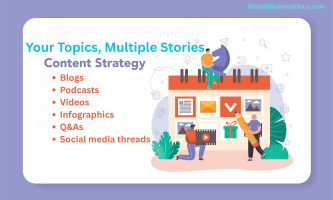What Is a Bear Hug? Let’s Discuss The Benefits

Bear hug refers to the takeover tactic where one company makes a generous offer to acquire another company. The offer is usually higher than the current market value of the target company’s shares. This proposal is made directly to the target company’s board of directors or shareholders. With the aim of convincing them to sell the company.
It is one of the business tactics to make people realize their requirements to meet their goals with complete ease. You should ensure that the scope of the margin of error must be less. Avoid making your selection or choices of the companies in the dark for acquisition.
The intent behind a bear hug offer is to persuade the target company’s leadership to negotiate a deal. Sometimes, it’s used as a strategy to initiate discussions and negotiations for a friendly acquisition, avoiding a hostile takeover. Develop your distribution channels properly.
What Is a Bear Hug?
In business, a bear hug refers to a takeover tactic where one company makes a generous offer to acquire another company. The offer is usually higher than the current market value of the target company’s shares. This proposal is made directly to the target company’s board of directors or shareholders with the aim of convincing them to sell the company.
Benefits Of Bear Hug

There are several benefits of the Bear hug that you must know your requirements while meeting your needs with complete ease. You should not make any of the wrong attempts to meet your needs with ease.
1. Team Building
A figurative “bear hug” in business symbolizes a strong, supportive team environment, fostering camaraderie and teamwork. You need to develop a strong team for your business that can help your business to grow further.
2. Enhanced Morale
Offering support and encouragement akin to a bear hug can boost employee morale, creating a positive work atmosphere. The positive morale of the employees can help you to reach your goals with complete ease. It can boost the chances of your brand value to the next level.
3. Improved Communication
Embracing the team’s ideas and efforts metaphorically in a bear hug encourages open communication, where everyone feels heard and valued. The communication skills of the employees will improve the process of communication to a great level. Seek the help of a digital marketing consultant in this regard.
4. Increased Loyalty
Expressing appreciation and support for employees can build loyalty and commitment to the company’s mission and goals. The loyalty programs will help you to build a positive image of your business in the long run.
5. Conflict Resolution
A figurative bear hug approach can diffuse conflicts by promoting understanding and cooperation among team members. Conflict resolution forms an essential part of business development in the long run. It can help you to build a clean organizational culture within your organization. Seek the help of a strategy consultant to keep things in the proper place.
6. Enhanced Productivity
When employees feel supported and valued, they are more likely to be motivated, leading to more productivity and efficiency. The productivity of the employees will rise due to the presence of this bear hug. It shows a method of appreciation towards the best employee within your organization. Similar kinds of information is available in Investopedia.
7. Positive Work Culture
Embracing a culture of appreciation and support in business, akin to a bear hug, can attract and retain top talent. Developing a positive work culture within an organization plays a vital role in business development.
8. Customer Relation
Extending a metaphorical bear hug to customers by providing exceptional service and support can foster strong, long-term relationships. Long-term customer relationship is possible with the application of the bear hug in the process of customer retention.
How Does Bear Hug Work?
You must be well aware of the working mechanism of the bear hug. It can help your business to grow at a rapid pace. Try making the correct choices at a specific point in time. Some of the key factors to know the reality are as follows:-
1. Aggressive Offer
The acquiring company offers a price significantly higher than the current market value of the target company’s shares. This offer is often made public to attract attention and pressure the target company into considering the offer seriously.
2. Appeal To Shareholders
By directly approaching the shareholders with this lucrative offer. The acquirer attempts to bypass the target company’s management decisions and board of directors. They aim to convince the shareholders that selling their shares at the offered price would be in their best interest.
3. Forcing Consideration
The aggressiveness of the offer can sometimes create pressure on the target company’s management and board to seriously consider the proposal, even if they are initially against the idea of a merger or acquisition.
4. Negotiation
If the bear hug offer is taken seriously, negotiations between the two companies commence. The terms of the acquisition or merger, including price, management structure, and other conditions, are discussed and refined during this stage.
5. Outcome
Depending on the negotiations, the target company might accept the offer, reject it, or negotiate for a higher price or better terms. Sometimes, even a rejected bear hug can lead to future negotiations or a change in the target company’s strategy.
Bear hugs in the business world can be controversial because they can put significant pressure on the target company and its shareholders, often leading to heated debates and intense negotiations.
Final Take Away
Hence, if you want to apply the bear hugs in the process of your brand development, then you must consider the above factors at your end. Try out the best options that can make things easier for you in attaining your career goals with ease.
You can share your views as well as comments in our comment box. It can boost the chances of your brand development to the next level. They are strategic moves aiming at acquiring control or merging with another company but can sometimes result in hostile takeovers if the target company’s management strongly opposes the offer.
Need More Business Knowledge Click Below!!













